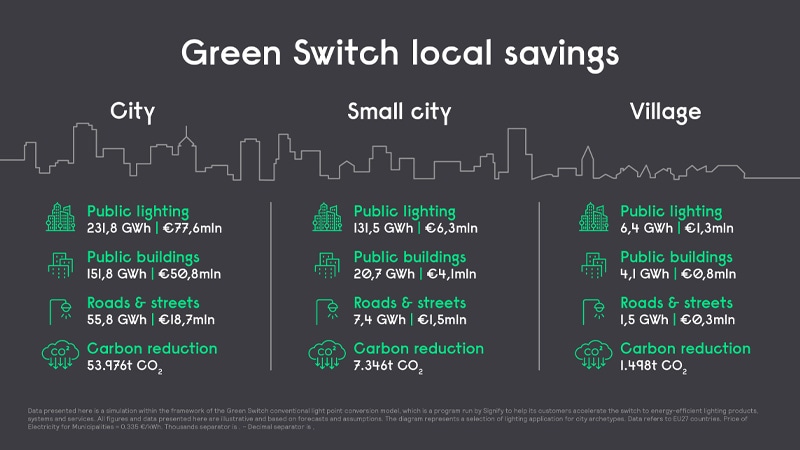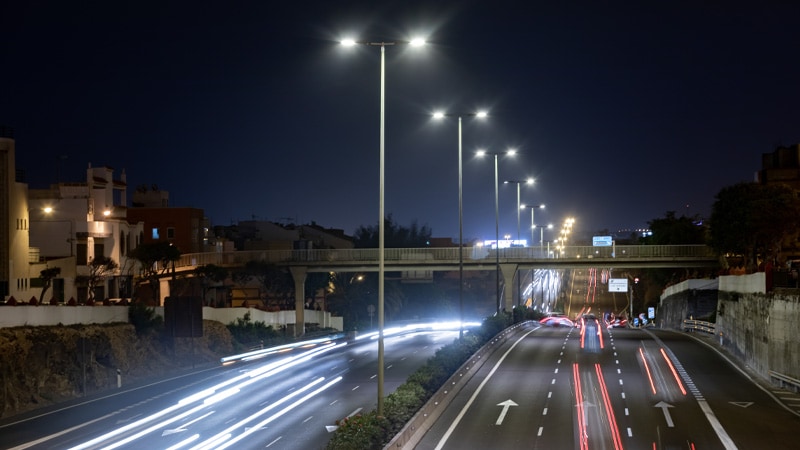26th April, 2023
Today, the world is facing what might be called a trilemma: the concurrent climate, energy, and economic crises. Economies are struggling with multiple impacts, businesses are dealing with quickly increasing costs and supply chain disruptions, and consumers are coping with inflation and skyrocketing energy bills.
Although the intensity of these crises varies in different parts of the world, the entire world is affected, and countermeasures must be taken urgently. Energy demands continue to increase drastically, and action must be taken now to mitigate the effects. In many countries, the grid is at or nearing capacity. In Europe, 25% of electricity is generated by gas—a precarious situation, given the uncertainties caused by politics and conflicts in the east.
Harry Verhaar
Head of Public & Government Affairs, Signify
Among other things, this means doubling down on energy-efficient solutions and retrofits, renewable and nature-based energy sources, EVs, and smart systems that can produce more with less.
Energy-efficiency initiatives will play a decisive role in both the short term and the long term. In the short term, energy-efficient retrofits and systems can help governments, businesses, and consumers quickly and effectively reduce energy consumption. In the long term, such initiatives will create the connected infrastructure required for achieving net zero ambitions.
The accelerated switch to connected LED lighting can jumpstart the necessary doubling of efforts and impact. Signify has made this call to action many times before, but now we need actions, and we need them yesterday.
Accelerating the switch to LED
Lighting accounts for 13% of all electricity usage worldwide. By moving to energy-efficient LED lighting, lighting-related energy consumption could drop to 8% globally by 2030, even while the total number of light points continues to rise. It’s a fast, non-disruptive intervention that can act as a frontrunner for deeper and more complex renovations. Given that two-thirds of professional light points around the world are still conventional, the energy-savings potential of switching to LED lighting is enormous.
LED lighting reduces energy consumption significantly over conventional alternatives—well over 50% in most cases. When connected and properly managed, monitored, and controlled, LED lighting systems can push energy reductions to as much as 80%, producing startling results. In addition to enhancing its efficiency, connecting LED lighting to a network and introducing sensors and controls lays the groundwork for digital smart building and smart city frameworks that bring together multiple functions and applications.
If businesses and cities converted all of their conventional light points to LED or connected LED, global electricity savings could total as much as 1,132 TWh per year, equivalent to the annual electricity consumption of 494 million households. The switch would save a total of €177 billion per year in electricity costs while taking more than 553 million tons of CO2 out of the atmosphere. That’s equivalent to the amount of carbon that 25 billion trees could sequester in a year.
The results can be significant even on the local level. In a mid-size European city of 200,000 inhabitants, for example, switching all conventional lighting to LED could save over 78,000 MWh, over €26 million, and over 18,000 tCO2 per year.

Incentivizing the consumer
Individuals also have an important role to play. There are many residential light points, and replacing those with LEDs can have a significant impact on electricity consumption and carbon emissions, while enabling more energy-efficient homes.
Encouragingly, many consumers have already started making the switch: 55% of residential lighting is already LED-based. In the EU alone, converting the remaining 45% could save more than 34 TWh annually—the annual consumption of 9.4 million households, or the electricity needed to charge over 10 million electric vehicles. The annual cost savings could top €11 billion.
Changing just seven residential light points to LED could save as much energy and costs as decreasing the indoor temperature by 2° C during the cold part of the year. Of course, residents could do both and double down on energy and cost savings without sacrificing additional comfort or compromising quality of life. Switching to LED could help the average household save up to £250 per year in the UK, taking pressure off the millions of households that are being pushed into fuel poverty by spiking energy prices.
Keeping the lights on is crucial
Some have suggested that the most expedient way to save energy is to turn the lights off altogether. This is a good example of a so-called solution that’s worse than the problem it’s intended to solve.
Light is one of life’s essentials—along with food, water, air, and shelter. Light affords safety, comfort, happiness, and all around well-being. Streets need illumination at night for safety—in fact, studies have demonstrated that the right lighting at night can deter crime by 21% and reduce traffic accidents by 30%. Schools need light so that students can learn. Hospitals need light for treatment and recovery. Public and commercial buildings need light so that people can perform their jobs properly and productively. Homes need light so that people can be together and relax and enjoy themselves in a comfortable environment.
No light is no answer. Highly energy-efficient LED light, properly managed and delivered at the right time and in the right way, is.
LED lighting with the right controls can maximize the energy-saving potential of digital light with dimming schedules and lighting behaviors that deliver light when and where it’s needed, and not when it isn’t.
That’s important, but it’s just a beginning. For decades, Signify has been building on our understanding of lighting to help improve people’s health and well-being by unlocking the visual, biological, and emotional benefits of light. We’ve developed optics and light recipes designed to help people see, feel, and function better.

You can't afford not to act now
Making a wholesale change from conventional lighting to LED and connected LED may seem daunting. But consider this: by not acting immediately, means you’re effectively paying twice—once now, when you pay elevated energy prices for energy-inefficient conventional lighting, and once later, when you have to replace your lighting.
Accelerating the switch to energy-efficient connected LEDs is a simple but significant step that can help you reduce energy consumption and meet climate action targets wherever you are in the world.
At Signify, we have put sustainability at the very heart of our business strategy. We achieved carbon neutrality for all our operations in September 2020, and we continue to outperform on many of our other sustainability commitments. With programs like Green Switch in Europe and Brighten America in the US, we’re sharing our expertise and experience to help others meet their commitments as well.
As the world leader in lighting, our role is not just to operate responsibly, but to help cities, businesses, and individuals contend with the current energy and economic crises while at the same time averting the worst impacts of climate change.
Energy efficiency is the winning ticket in the climate lottery. All you have to do is cash it in—but the time to take such action is now. You can’t afford not to—for the economy, for the climate, and for the people who depend on you.
Take action today. Find out how to make the Green Switch
Listen to this article, and discover other topic related blog podcasts, here.
Signify Global Media relations - Professional Lighting
Claire Phillips
Tel: +44 7956 489081
Email: claire.phillips@signify.com
Signify (Euronext: LIGHT) is the world leader in lighting for professionals, consumers and the Internet of Things. Our Philips products, Interact systems and data-enabled services, deliver business value and transform life in homes, buildings and public spaces. In 2023, we had sales of EUR 6.7 billion, approximately 32,000 employees and a presence in over 70 countries. We unlock the extraordinary potential of light for brighter lives and a better world. We have been in the Dow Jones Sustainability World Index since our IPO for seven consecutive years and have achieved the EcoVadis Platinum rating for four consecutive years, placing Signify in the top one percent of companies assessed. News from Signify can be found in the Newsroom, on X, LinkedIn and Instagram. Information for investors is located on the Investor Relations page.
